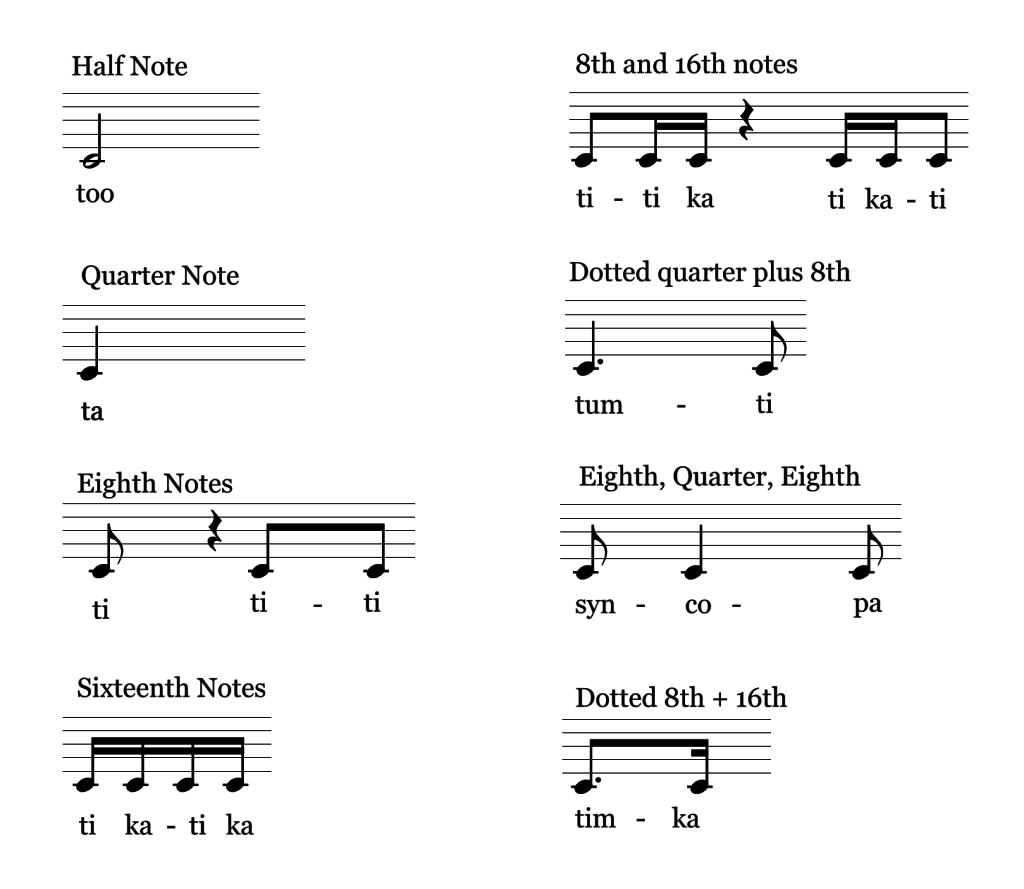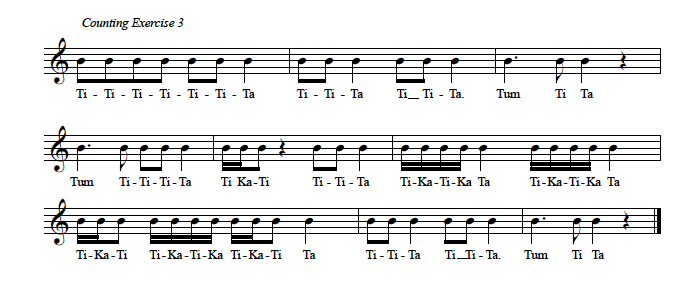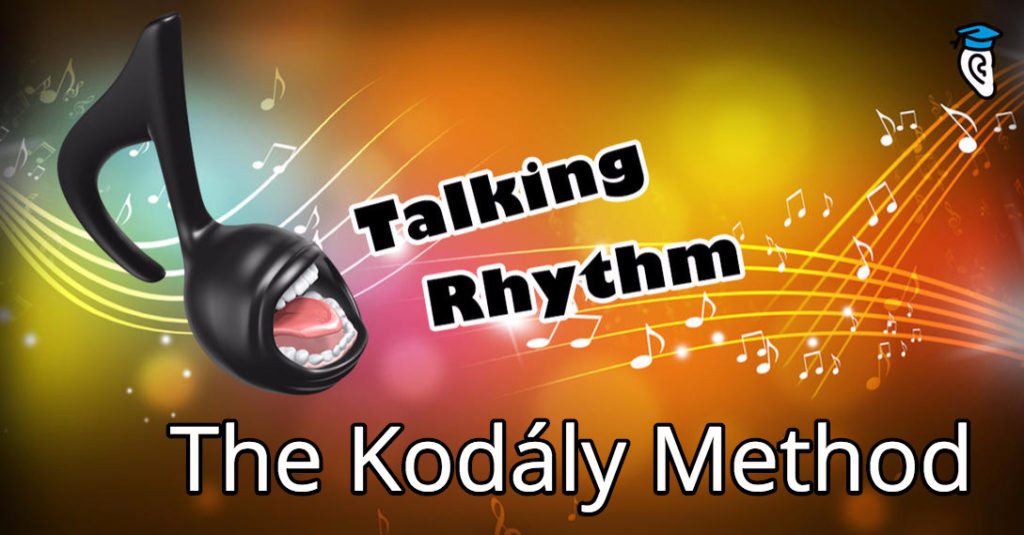Are you struggling with counting out basic rhythm? Do you wish that you could understand a rhythm on sight? Does sheet music confuse you? Fortunately there is a way to translate playing by ear into understanding written rhythms that is easy to use whether you are five or fifty-five!
In the Talking Rhythm series so far we have discussed how to use a simple count chant method to understand rhythms, from basic quarter and eighth note patterns to more complex rhythms involving 16th notes, triplets and compound meter. If you have not had a chance to explore the previous articles in the series it’s not too late! Click here to get started from the beginning.
In this article we are exploring the Kodály Method, a way to develop key musicianship skills developed by Hungarian composer Zoltán Kodály in the early 20th Century. The Kodály Method is both educational and fun, using a combination of singing, folk music, solfège, and practical sequencing to teach key skills like reading notation and developing ear training. When learning rhythm in the Kodály Method, the musician uses simple syllables to represent key rhythms. These exercises have been proven to work for half a century and now you too can use these simple principles to learn rhythm.
Background: Who was Zoltán Kodály?
The world-renowned composer Zoltán Kodály (1882-1967) believed strongly in developing musicianship at an early age. A multi-talented composer whose work stretched into regional ethnomusicology, music education, and full scale orchestral composition, he developed the Kodály Method to “liberate the mind” through teaching young children music, primarily through singing. His method delved into many aspects of music theory, singing, and rhythm, and Kodály wrote countless pedagogical works for young children.
“The characteristics of a well-trained musician are a well-trained ear, a well-trained mind, a well-trained heart, and a well-trained hand. All four parts must develop together in contact equilibrium.”
– Zoltán Kodály
His strong musical principles, rooted deep in classical Greek education, touched every area of his life, and compelled Kodály to spend a great part of his time teaching children the value of music from a very early age.
Learning with the Kodály Method
Below you will see a chart detailing how to “speak” rhythms using simple name syllables. For example, when counting a quarter note, you will say “ta” or when speaking a series of 16th notes you will read “tika-tika”.
 Listen to the example below. In this example, the musician speaks a very simple rhythm using the Kodály Method. One clear benefit of the Kodály Method over the traditional count chant method is that the syllables actually “sound” like the rhythm they represent and hold out the same amount of time. This means there’s less need for tapping out the beat with your foot while you speak the rhythms to know where to place each note: speak the right syllables and the notes should automatically occur with the right timing.
Listen to the example below. In this example, the musician speaks a very simple rhythm using the Kodály Method. One clear benefit of the Kodály Method over the traditional count chant method is that the syllables actually “sound” like the rhythm they represent and hold out the same amount of time. This means there’s less need for tapping out the beat with your foot while you speak the rhythms to know where to place each note: speak the right syllables and the notes should automatically occur with the right timing.
Much more complex notation can also be read using the Kodály symbols, as you’ll discover below.
Exercise 1: Counting Quarter Notes and 8th Notes
In this first example you will count out quarter note and 8th note rhythms. Notice that you do not count out the quarter rests in this example. You only count the actual notes.
- Play the audio sample several times
- Practice counting with the audio sample
- Count out the rhythm without the audio sample
- If you can, practice tapping your foot in time as you count the rhythm

Exercise 2: Counting 16th Notes
In this example you will practice counting 16th notes. Take your time reviewing the Kodály Rhythm Symbol chart before practicing this example. It may take a little bit of time to familiarize yourself with the different syllables for quarter notes, 8th notes, and 16th notes. Be sure that you count these rhythms out loud. Hearing yourself count these rhythms will help you train your ears to connect your listening skills with written notation.
- After reviewing the rhythm symbol chart, play the audio sample
- Practice counting with the audio sample
- Count out the rhythm without the audio sample
- If you can, practice tapping your foot in time as you count the rhythm

Exercise 3: More Advanced Practice
In this final example, you will practice counting the rhythm using the Kodály Method for a longer period of time. Be sure that you are familiar with the rhythm names before reading out the samples.
- Play the audio sample several times
- Practice counting with the audio sample
- Count out the rhythm without the audio sample
- Tap your foot in time as you count the rhythm again

Everyday Practice
You can apply the Kodály Method to your everyday music practice. Look over rhythms that you encounter on popular sheet music. Write out the Kodály rhythm names under the rhythms and practice saying them out loud.
As you listen to music on the radio, sing a favorite song, or jam out on your instrument, take the time to identify the rhythms that you are playing. Did you just play a quarter note or a string of 16ths? Using the Kodály Method, count out the syllables out loud, then try to notate the rhythms. Continue applying these skills every day!
There are other syllable systems out there too – check out Dynamic Music Room’s Ultimate Guide To Counting Rhythm And Rhythm Syllables for a thorough guide to all these systems, their pros and cons – plus a slew of rhythm games you can play with children (or with the young at heart).
The Kodály method is a very flexible and direct way to experience rhythms, and bypasses some of the extra mental “chatter” caused by counting. It works both ways – you can identify rhythms you hear with syllables, play them and transcribe them, or you can look at written notation, and chant the syllables to get the rhythms in your head. Keep this in mind throughout your day-to-day interactions with music and your sense of rhythm will become much stronger.









